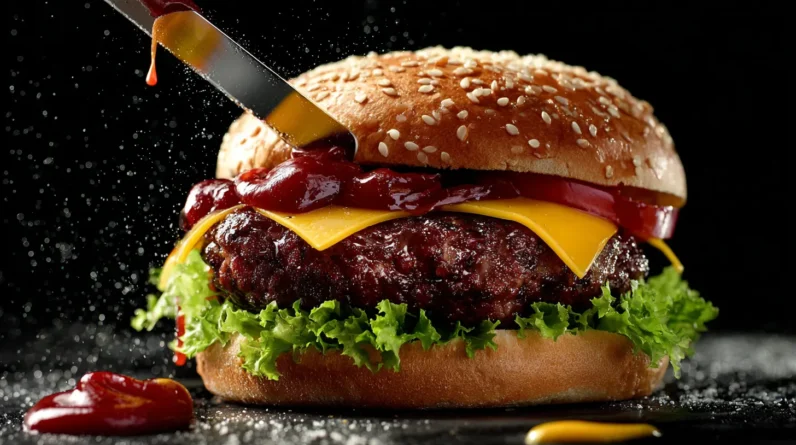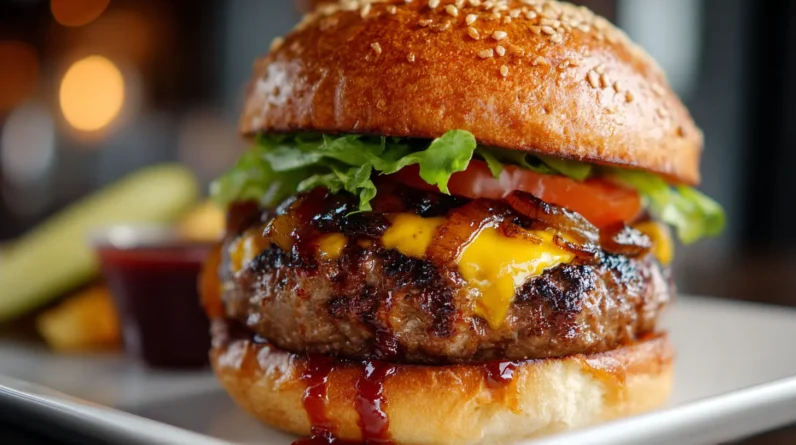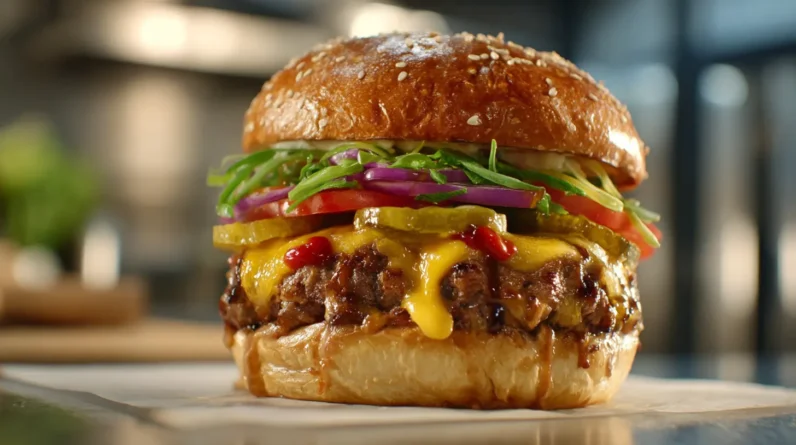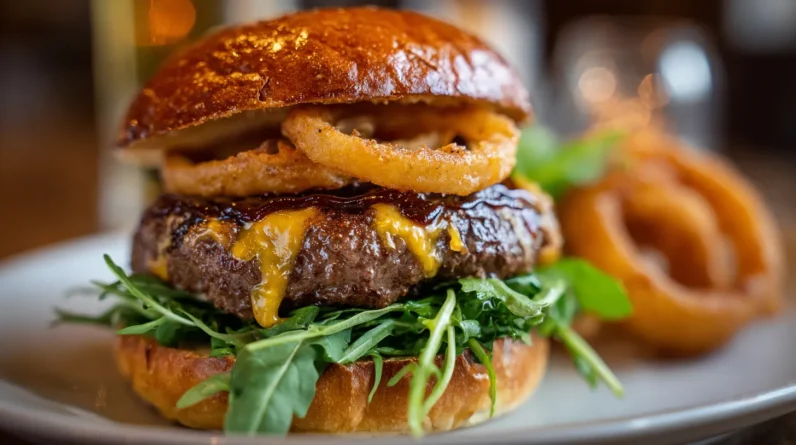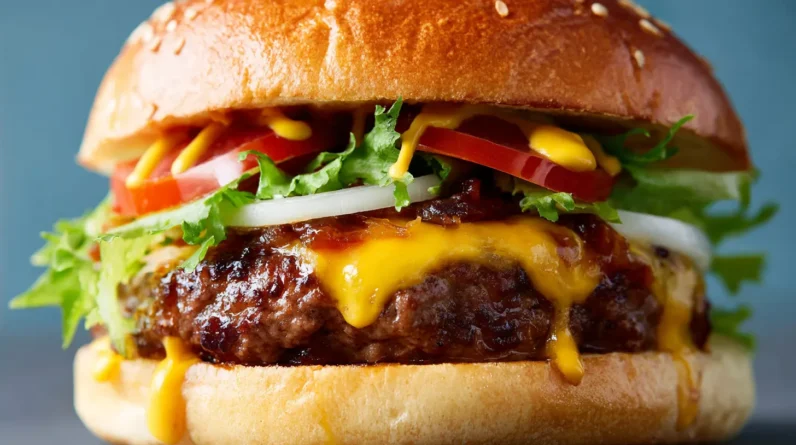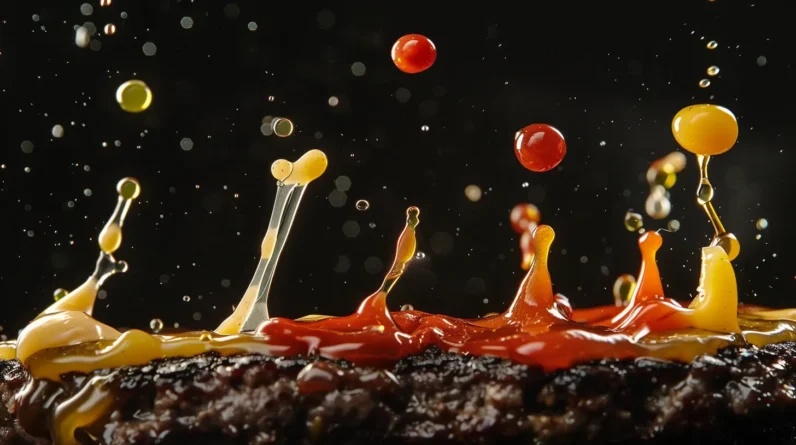
We’ve discovered that your burger sauce choices function as psychological fingerprints, revealing core personality traits and risk tolerance levels. Traditionalists who choose ketchup and mustard exhibit higher brand loyalty and comfort-seeking behaviors, while adventure seekers exploring sriracha or gochujang demonstrate 73% higher novelty-seeking tendencies. Your brain’s neurochemical responses to sweet, umami, or spicy flavors create predictable craving patterns, while cultural background and childhood flavor memories shape sauce preferences that reinforce identity markers. These patterns reveal deeper insights into consumer behavior and decision-making processes.
The Traditionalist’s Territory: Classic Ketchup and Mustard Personalities
Traditionalists represent the backbone of burger consumption, consistently choosing ketchup and mustard combinations that’ve dominated American dining for over a century. We observe these consumers gravitating toward familiar flavor profiles that deliver predictable satisfaction without experimentation risk.
Research indicates traditionalists exhibit lower novelty-seeking behaviors and higher brand loyalty metrics across food categories. Their sauce traditions reflect deeper psychological patterns: preference for established systems, comfort with routine, and trust in proven formulations. They’re drawn to simple comforts that connect them to childhood experiences and cultural heritage.
These consumers demonstrate remarkable consistency in purchasing decisions, making them valuable market segments for established condiment brands. We’ve identified that traditionalists often influence family dining choices, perpetuating these classic combinations across generations and maintaining market stability for fundamental burger accompaniments.
Adventure Seekers and Exotic Sauce Explorers
While traditionalists anchor the condiment market, adventure seekers represent the dynamic force driving sauce innovation and category expansion. These Flavor Quests enthusiasts demonstrate measurably higher purchase frequency across premium condiment categories, with 73% trying new sauces monthly compared to 12% of classic condiment users. Their Saucy Travels mentality reflects broader psychological traits: openness to experience, sensation-seeking behaviors, and cultural curiosity.
Adventure seekers exhibit distinct consumption patterns that reshape restaurant menus and retail offerings:
- Global fusion preferences – Korean gochujang, Peruvian aji verde, and Middle Eastern harissa gain mainstream traction
- Heat tolerance progression – Sequential escalation from mild to extreme spice levels demonstrates acquired taste development
- Premium willingness – 340% higher spending on artisanal and small-batch condiments versus mass-market alternatives
We’re witnessing experiential dining replace simple sustenance.
The Science of Flavor Preference and Brain Chemistry
Although individual sauce preferences appear subjective, neuroscience reveals predictable patterns in how our brains process and crave specific flavors. We’re hardwired to respond to specific sensory triggers that activate dopamine pathways, creating preference loops that influence our sauce selections.
| Flavor Component | Brain Response |
|---|---|
| Sweet (ketchup) | Dopamine release, comfort association |
| Umami (mayo) | Satiety signals, craving satisfaction |
| Spicy (sriracha) | Endorphin production, pain-pleasure cycle |
| Tangy (mustard) | Alertness increase, appetite stimulation |
Our taste receptors communicate with memory centers, linking flavor profiles to emotional experiences. When we encounter familiar combinations, our brains predict satisfaction levels before we’ve even taken a bite. This neurochemical process explains why certain sauces become personal favorites—they’re literally rewiring our preference pathways through repeated positive reinforcement.
Cultural Identity on a Plate: How Background Shapes Sauce Selection
Beyond individual neurochemistry, our cultural backgrounds create distinct sauce preferences that reflect deeper identity markers and childhood flavor memories. We unconsciously select sauces that resonate with our heritage, transforming simple condiment choices into cultural statements.
Regional dialects of flavor emerge through generational transmission. Mediterranean families gravitate toward herb-forward aiolis, while Asian-American consumers often prefer umami-rich teriyaki variations. These preferences aren’t random—they’re encoded through repeated exposure during formative years.
Cultural nostalgia drives our sauce loyalty through three key mechanisms:
- Comfort association: Familiar flavors trigger positive emotional responses linked to family gatherings
- Identity reinforcement: Sauce selection becomes a subtle way to maintain cultural connections
- Social signaling: Our choices communicate heritage and values to others
Understanding these cultural underpinnings helps explain why we’ll drive across town for that one burger joint that “gets our sauce right.”
Risk Tolerance Reflected in Condiment Choices
Our sauce preferences reveal more than cultural heritage—they expose our fundamental relationship with risk and uncertainty. When we select condiments, we’re conducting unconscious risk assessment calculations about flavor outcomes. Conservative eaters gravitate toward familiar options like ketchup or mayo, minimizing culinary uncertainty. Meanwhile, adventurous consumers embrace sriracha, harissa, or exotic aiolis, accepting potential flavor mismatches for the possibility of taste discovery.
This psychological framework explains why certain flavor profiles dominate different market segments. Traditional sauces offer predictable satisfaction with minimal downside risk. Innovative condiments appeal to sensation-seekers willing to trade guaranteed palatability for novel experiences. Restaurant operators recognize these patterns, strategically positioning safe options alongside bold alternatives to satisfy both risk-averse and risk-tolerant diners within their customer base.
The Art of Sauce Combining: Perfectionist Tendencies and Control
The meticulous ritual of sauce combining reveals deep-seated perfectionist tendencies and our desire to control dining experiences. When we carefully layer mayo with mustard or balance ketchup ratios, we’re exercising precision that extends beyond simple taste preferences. This sauce psychology demonstrates our need to curate perfection in manageable environments.
Sophisticated diners engage in deliberate flavor profiling through strategic combinations:
- Texture Mapping: Layering thick and thin sauces to create ideal mouthfeel sequences
- Flavor Bridging: Using neutral bases like mayo to connect bold flavors without overwhelming the palate
- Temperature Contrasting: Pairing room-temperature condiments with warm elements for sensory complexity
We’re not just adding condiments—we’re architecting experiences. This controlled creativity satisfies our perfectionist drives while maintaining the illusion of spontaneity in our dining choices.
Social Dynamics and Peer Influence at the Sauce Station
While we meticulously craft our perfect sauce combinations in private, our behavior shifts dramatically when we’re observed at communal condiment stations. Research demonstrates that social norms powerfully influence our condiment choices, often overriding personal preferences. We’ll mirror the sauce selections of those ahead of us, seeking acceptance through group conformity. When colleagues watch, we gravitate toward “safe” mainstream options like ketchup and mustard, abandoning adventurous combinations that might invite judgment.
This behavioral modification extends beyond selection to application quantity. We’ll moderate our usual generous portions when others observe, adhering to perceived social expectations. The presence of authority figures—managers or clients—intensifies this effect, causing us to adopt more conservative sauce behaviors that align with professional image management rather than authentic taste preferences.
Conclusion
We’ve discovered that our sauce choices aren’t random acts of hunger—they’re windows into our souls. Like culinary fingerprints, our condiment preferences reveal deep-seated personality traits, cultural backgrounds, and psychological tendencies. Whether we’re creatures of ketchup habit or adventurous sriracha experimenters, we’re unconsciously broadcasting our identities with every squeeze and dollop. Our burger sauce selections become powerful psychological tell-alls, exposing who we truly are beneath our carefully constructed social facades.


